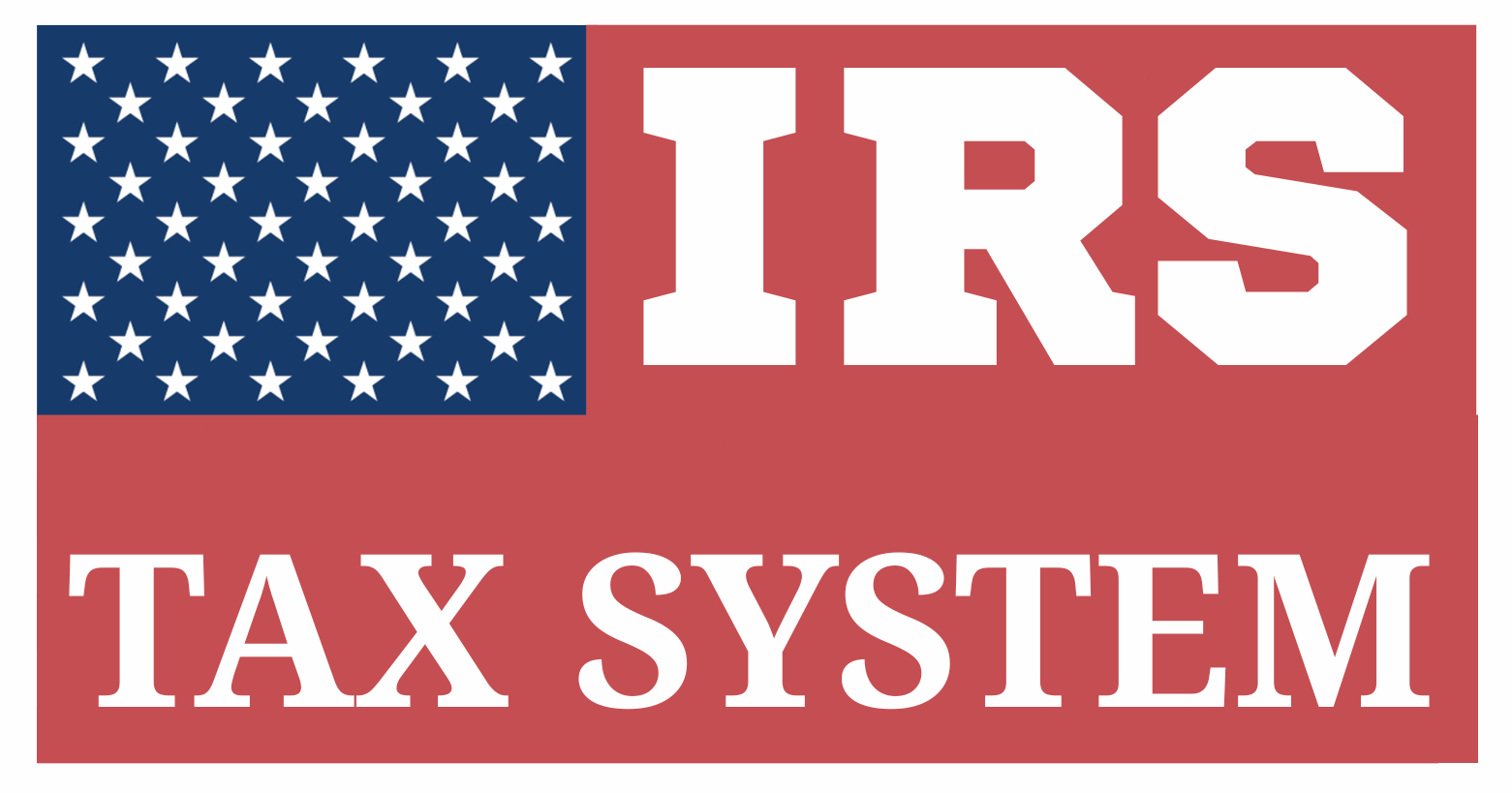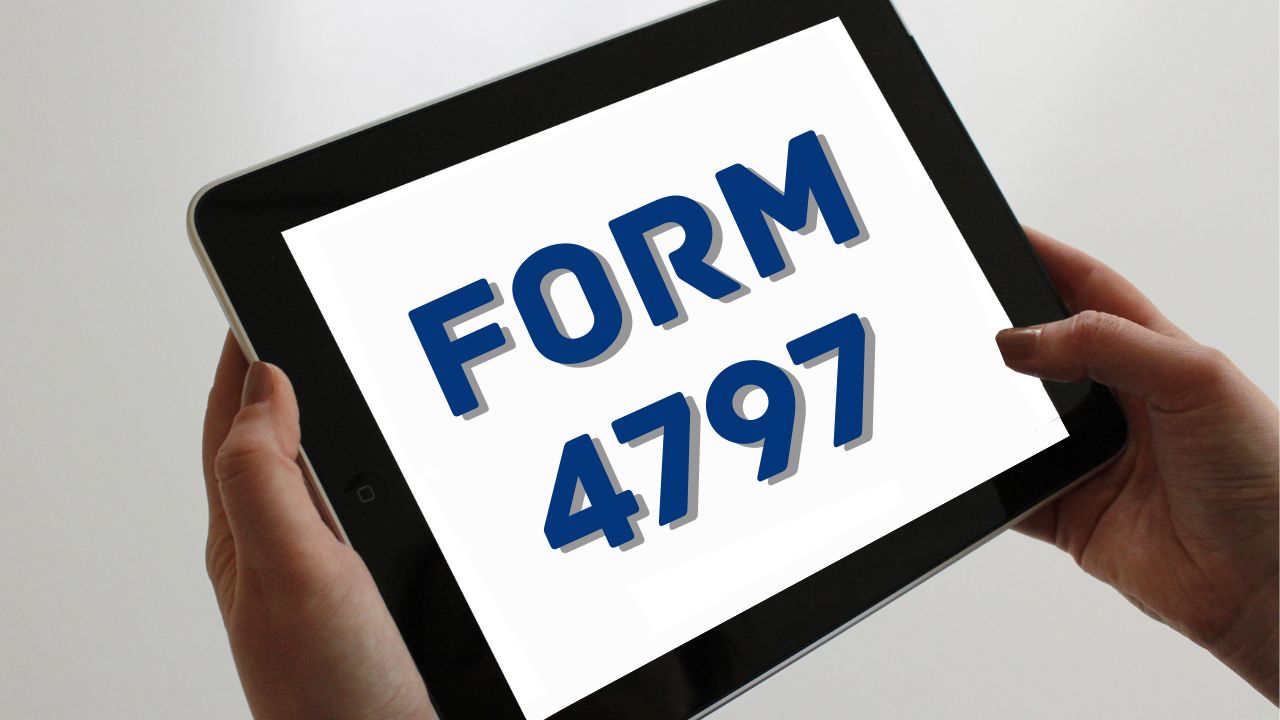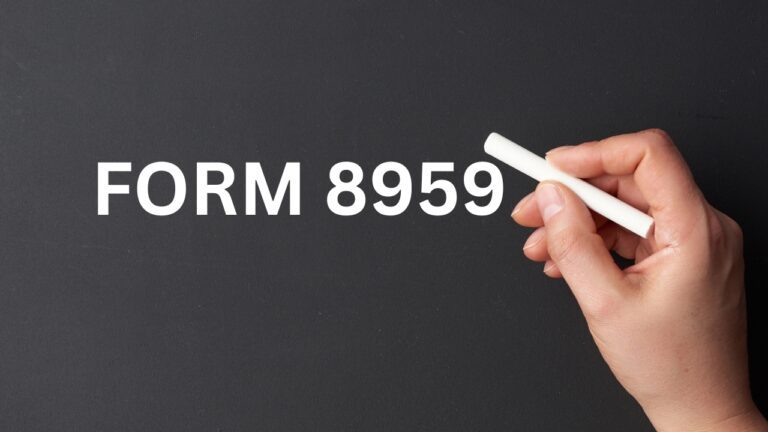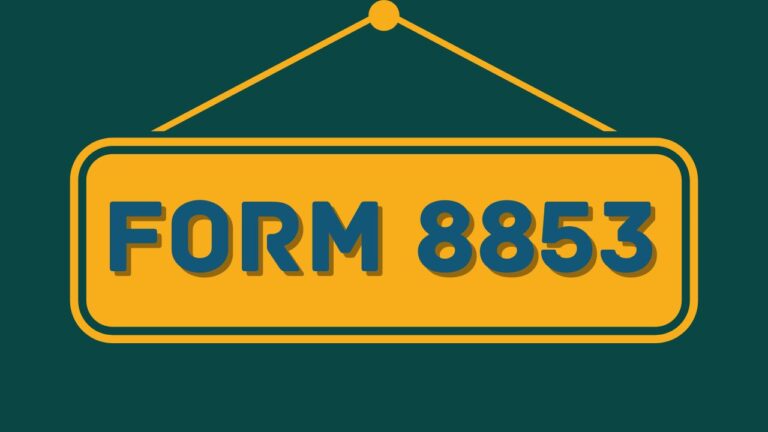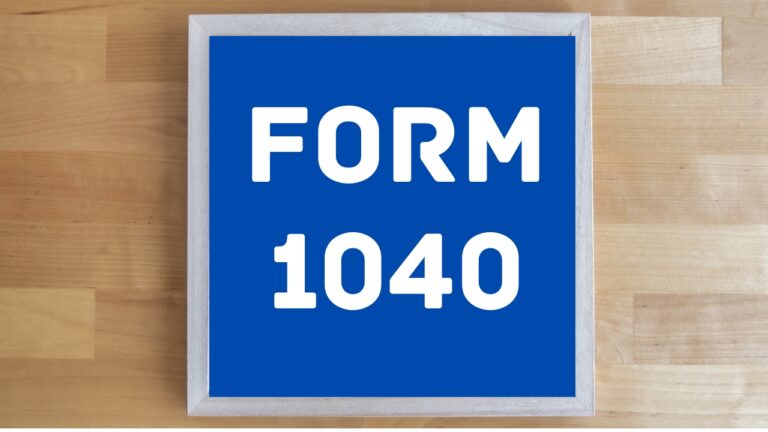Form 4797: A Clear Explanation
Table of Contents
What is IRS Form 4797 & How It Works?
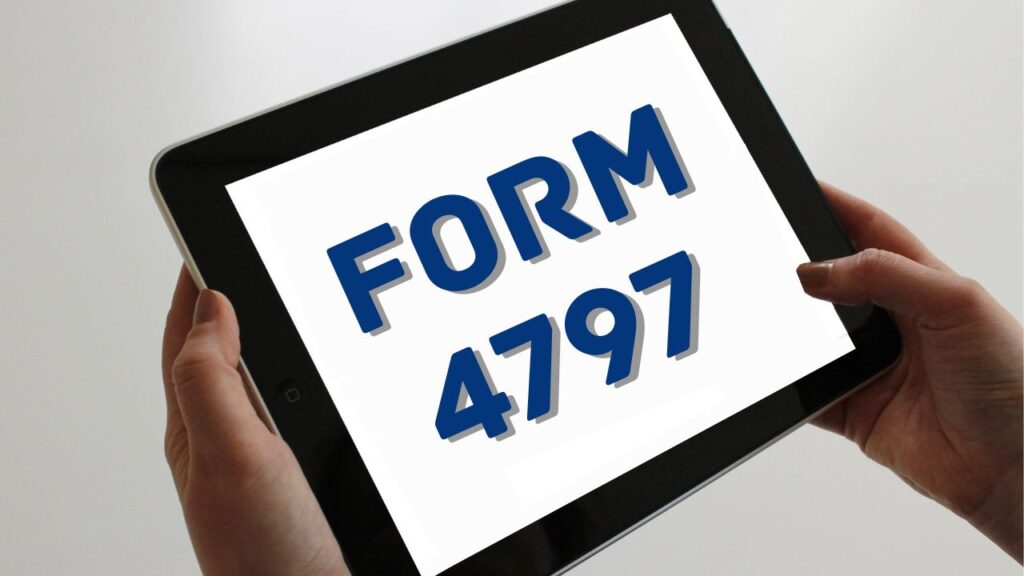
IRS Form 4797 is filed by individuals, corporations, partnerships, and trusts to report gains or losses from the sale, exchange, or involuntary conversion of business-use property. It’s primarily used for property used in a trade or business, depreciable property, and real estate that generates rental income.
This form is also necessary when reporting gains or losses from Section 1231, 1245, and 1250 properties, such as commercial buildings, equipment, or vehicles used in business.
Who Must File IRS Form 4797? (Expanded & Detailed Explanation)
IRS Form 4797, titled “Sales of Business Property,” is a critical tax form used to report the sale, exchange, or involuntary conversion of property used in a trade or business. This includes not just physical assets like buildings and machinery, but also intangible property (such as certain patents or goodwill under specific circumstances). If you dispose of business-use property that has been depreciated or amortized, you must generally report the transaction using Form 4797.
You are required to file IRS Form 4797 if :
1. You Sold or Disposed of Depreciable Business Property
- This includes machinery, equipment, vehicles, furniture, computers, and other tangible property used in your trade or business.
- If the property was subject to depreciation or amortization and you received any gain or incurred a loss, it must be reported here—not on Schedule D.
2. You Disposed of Real Property Used in a Trade or Business
- For example, selling a commercial building, warehouse, factory, or rental property used for income production.
3. You Had a Section 1231 Transaction
- Section 1231 covers the disposition of depreciable assets and real property used in a trade or business for over one year. Qualifying gains are taxed at favorable capital gains rates, while losses are fully deductible as ordinary losses.
4. You Recovered Depreciation on Property (Depreciation Recapture – §1245 or §1250)
- If you previously took depreciation deductions on the asset and sell it for more than its adjusted basis, some or all of the gain may be “recaptured” and taxed as ordinary income.
5. You Claimed a Section 179 Deduction
- Property for which you claimed the Section 179 expense deduction (immediate expensing of qualifying business property) must be reported upon sale or disposal.
6. You Sold or Repossessed Installment Sale Property Used in Business
- If you’re reporting a gain or loss from an installment sale of business-use property, the income flows through this form.
7. You Were Involved in an Involuntary Conversion (e.g., casualty, theft, or condemnation)
- If your business property was damaged or destroyed, and you received insurance proceeds or other compensation, you must report the gain/loss here.
8. You Disposed of Business Use Property via Like-Kind Exchange (IRC §1031)
- Although gains may be deferred under Section 1031 like-kind exchanges, the transaction must still be reported on Form 4797 to reflect the property’s disposition.
Who Typically Files Form 4797?
- Sole proprietors disposing of business-use equipment or property.
- Landlords and real estate investors selling rental properties.
- Corporations selling vehicles, factories, or equipment.
- Partnerships and LLCs exchanging business-use assets.
- Self-employed professionals (e.g., consultants, tradespeople) who sell depreciated property.
Who Does Not Need to File Form 4797 ?
You generally do not need to file this form if:
- You sold personal-use property, like your car or personal home.
- You sold capital assets not used in a business (these go on Schedule D of Form 1040).
- You received no income or loss from the asset disposal (though you may still need to explain it).
Structure of IRS Form 4797: A Section-by-Section Overview
IRS Form 4797 is structured into four main parts, each serving a specific purpose for reporting gains or losses from business-use property, involuntary conversions, and depreciation recapture. Understanding how the form is organized is key to reporting accurately.
Part I – Sales or Exchanges of Property Used in a Trade or Business (Held > 1 Year)
- Purpose: This section captures Section 1231 transactions, which apply to property used in a trade or business for more than one year.
- Includes:
- Sales of real estate (e.g., warehouses, rental buildings)
- Machinery or equipment held longer than one year
- Tax Treatment: Gains may qualify for capital gain treatment; losses are typically deductible as ordinary losses.
- Key Lines:
- Line 2: Gross sales price
- Line 7: Net gain or loss
Part II – Ordinary Gains and Losses (Held ≤ 1 Year)
- Purpose: Report ordinary gains or losses from property held 1 year or less, or from depreciation recapture (Section 1245/1250).
- Includes:
- Equipment sold within a year of purchase
- Short-term disposals
- Gains that are not eligible for capital gain treatment
- Tax Treatment: All income here is taxed at ordinary income tax rates.
Part III – Report of Gains from Sales of Depreciable or Natural Resource Property under Sections 1245, 1250, 1252, 1254, and 1255
- Purpose: This section calculates depreciation recapture, which converts some or all of the gain into ordinary income, even if the asset was held over a year.
- Breakdown:
- Section 1245: Depreciable personal property (e.g., machinery, vehicles)
- Section 1250: Real estate with accelerated depreciation
- Section 1252–1255: Specialized assets like farmland or intangible resources
- How It Works:
- You report the adjusted basis, depreciation taken, and recaptured amount.
- Remaining gains (after recapture) may flow to Part I.
Part IV – Recovery of Previously Deducted Expenses Under IRC §179 and §280F(b)(2)
- Purpose: Report recapture of deductions previously taken under:
- Section 179: Immediate expensing of qualified property
- Section 280F: Business vehicles exceeding depreciation limits
- Triggering Events:
- You converted business property to personal use
- Sold Section 179 property before its useful life
- Tax Treatment: Recapture amounts are added to ordinary income.
How to Calculate & File IRS Form 4797
Form 4797 is used to report gains or losses from the sale or exchange of business-use property, including real estate, equipment, and certain involuntary conversions. Here’s a step-by-step approach to calculating and filing it:
Step-by-Step Calculation: How to Calculate
- Determine the Adjusted Basis
Original purchase price- Improvements
– Depreciation taken
- Improvements
- Calculate Amount Realized
Sales price
– Selling expenses (commissions, legal fees) - Calculate Gain/Loss
Net gain or loss is determined by subtracting the asset’s adjusted basis from the total amount received - Apply Recapture Rules
- For Section 1245 property (e.g., equipment or machinery), any depreciation taken is recaptured and taxed as ordinary income.
- Section 1250 (real property like buildings): Excess depreciation over straight-line is recaptured.
- Determine Holding Period
- Over one year: Section 1231 treatment (favorable capital gains)
- One year or less: Ordinary income/loss
Step 1: Identify the Type of Property
Determine:
- Was the asset utilized in the course of conducting business activities ?
- Was it held more than one year or one year or less?
- Is it depreciable or non-depreciable?
- Is there depreciation recapture (e.g., under §1245 or §1250)?
Step 2: Determine Sale Details
Collect key data:
- Date acquired and sold
- Original purchase price
- Accumulated depreciation
- Adjusted basis (Cost – Depreciation)
- Sales price
- Selling expenses (if any)
Step 3: Calculate Gain or Loss
Gain/Loss = Selling Price – Adjusted Basis – Selling Expenses
- If positive = Gain
- If negative = Loss
Step 4: Allocate to Correct Part of Form 4797
| If this applies… | Use this Part |
| Assets used in business and held for more than one year | Report in Part I under Section 1231. |
| Held ≤1 year or fully depreciated | Part II (Ordinary gains/losses) |
| Depreciable property (e.g., machines, real estate) | Part III (Recapture) |
| Recapture under Section 179/280F | Part IV |
Step 5: Account for Depreciation Recapture
If the asset was depreciated:
- Calculate depreciation taken
- Recognize the recaptured portion as ordinary income in Part III
Examples
Example 1: Section 1231 Gain (Long-Term Business Property)
- Sold equipment used in business for $30,000
- Adjusted basis: $20,000
- Held for 2 years
- Gain = $10,000 → Report on Part I (potential capital gain)
Example 2: Section 1245 Recapture
- Sold depreciated machinery for $25,000
- Original cost: $40,000
- Depreciation: $20,000
- Adjusted basis: $20,000
- Gain = $5,000
- Entire gain recaptured as ordinary income → Report in Part III
Step-by-Step: How to File?
1. Complete All Applicable Parts
- Fill out Part I–IV as applicable
- Report each asset sold with details (description, dates, basis, gain/loss)
2. Summarize Results
- Total gains or losses are carried forward to:
- Schedule D (capital gains)
- Form 1040, Line 7 (for individuals)
- Form 1065 / 1120 / 1120S (for entities)
3. Attach to Main Tax Return
Attach Form 4797 to:
- Form 1040 (individuals)
- Form 1065 (partnerships)
- Form 1120 or 1120-S (corporations)
4. E-File or Mail to IRS
- Most taxpayers must e-file.
- Paper filers must send to the IRS address based on your tax return’s mailing instructions.
Example:
Asset: Business truck
- Purchase price: $40,000
- Depreciation taken: $25,000
- Adjusted basis: $15,000
- Sold for: $30,000
Calculation:
- Gain = $30,000 – $15,000 = $15,000
- Recapture of $15,000 as ordinary income under Section 1245 → Report in Part III
Filing Deadline:
- Same as your tax return deadline:
- Individuals: April 15
- Corporations: April 15 or the 15th day of the 4th month after year-end
- Extensions available with Form 4868 (individuals) or 7004 (business)
Related IRS Forms & Schedules to Form 4797
Form 4797 is used to report sales, exchanges, and involuntary conversions of business-use property. The following forms and schedules are commonly used in conjunction with it for complete reporting and tax compliance:
Schedule D (Form 1040) – Capital Gains and Losses
- Used to disclose short-term and long-term capital gains and losses.
- Relation: Certain amounts from Form 4797 Part I (Section 1231 gains/losses) flow into Schedule D if they qualify as capital gains.
Form 8949 – Used to report capital asset sales and exchanges
- Purpose: Breaks down individual capital asset transactions before they total into Schedule D.
- Relation: Sometimes used for detailed reporting when assets change categories.
Form 4562 – Depreciation and Amortization
- Purpose: Reports depreciation taken on business or rental property.
- Relation: Useful in determining the adjusted basis and calculating Section 1245/1250 recapture on Form 4797.
Form 6252 – Installment Sale Income
- Purpose: Reports sales where payments are received over multiple years.
- Relation: If business-use property is sold on an installment basis, gains may be reported partly on Form 6252 and referenced on Form 4797.
Form 4684 – Casualties and Thefts
- Purpose: Reports losses from property damage or destruction due to casualty or theft.
- Relation: Involuntary conversions of business property (like due to fire or theft) may require entries on both Form 4684 and Form 4797.
Schedule K-1 (Form 1065 / 1120-S)
- Purpose: Pass-through entities (like partnerships or S-corps) report each partner/shareholder’s share of income.
- Relation: Gains and losses from Form 4797 reported at entity level flow through to the partner/shareholder via Schedule K-1.
Form 1040 (Individual Income Tax Return)
- Purpose: Main form used by individual taxpayers.
- Relation: Final gains or losses calculated on Form 4797 flow into Form 1040, usually Line 7 or Schedule D.
Form 1065 / 1120 / 1120-S
- Purpose: Business entity tax returns.
- Relation: Partnerships, C corporations, and S corporations report business property sales via Form 4797, which supports their return.
Form 8824 – Like-Kind Exchanges
- Purpose: Reports tax-deferred exchanges under IRC §1031.
- Used alongside Form 4797 when part of the gain from an asset exchange is subject to taxation
Form 4797 Worksheet
- Purpose: Not an official IRS form, but often included by tax software or CPAs.
- Relation: Helps calculate recapture income, Section 1231 netting, and depreciation adjustments prior to final entries on Form 4797.
Summary Chart:
| Form / Schedule | Use | Connected to |
| Schedule D | Capital gain/loss summary | Part I of Form 4797 |
| Form 4562 | Depreciation tracking | Basis & recapture (Part III) |
| Form 6252 | Installment sale reporting | Gains from Form 4797 |
| Form 4684 | Casualty/Theft losses | Involuntary conversion |
| Form 8824 | Like-kind exchanges | Deferred/taxable portion |
| Schedule K-1 | Pass-through reporting | Partnership or S-corp sales |
| Form 8949 | Capital asset details | If assets need breakout |
Conclusion
IRS Form 4797 is a critical tool for accurately reporting the sale or exchange of business-use assets and applying complex tax rules for gains, losses, and depreciation recapture. Whether you’re a sole proprietor selling a delivery van or a corporation offloading depreciated real estate, this form ensures your tax outcomes align with IRS expectations.
Frequently Asked Questions (FAQs)
Do I report personal asset sales on Form 4797?
No. Form 4797 is strictly for business-use or income-producing property.
Are real estate sales always capital gains?
No. If the property was depreciated or held less than a year, it may trigger recapture or ordinary income.
Can rental property be reported on Form 4797?
Yes, particularly if you sell the rental property. Use Schedule E to separately report all rental income and associated expenses.
What’s the difference between 1245 and 1250 property?
–1245: Personal property (e.g., machinery, vehicles)
–1250: Real property (e.g., buildings)
Do I need a tax professional to file Form 4797?
It’s recommended, especially when recapture rules or Section 1231 treatment apply. Errors can lead to costly penalties.
